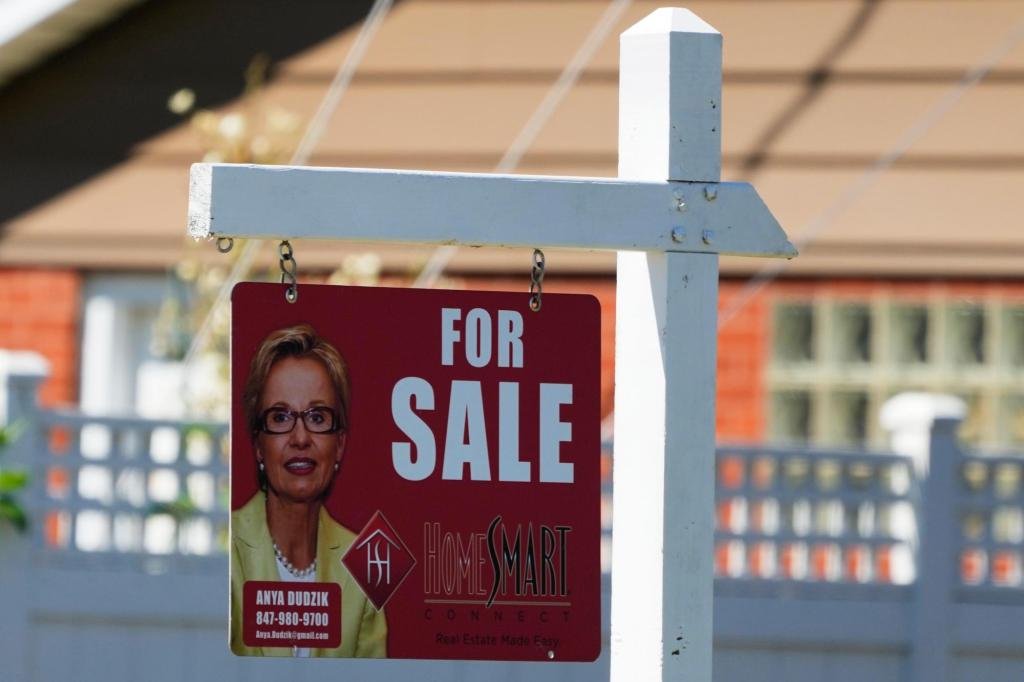Mortgage Rates Shift: A New Dawn for U.S. Homebuyers?
In a small suburb of Nashville, Tennessee, Amanda, a young teacher, has been meticulously saving for her first home. For months, she has watched anxiously as mortgage rates oscillated, often snatching away her dreams of homeownership. As her alarm buzzed early one Thursday morning, she learned that the average rate on a 30-year mortgage had finally dipped to 6.77%—the lowest since early May. “It feels like a glimmer of hope,” Amanda said, her eyes lighting up as she contemplated hitting the housing market once more.
The Landscape of U.S. Mortgage Rates
The recent decline in mortgage rates signals a pivotal moment in a U.S. housing landscape desperately in need of rejuvenation. According to Freddie Mac, the drop from 6.81% the previous week marks a significant change from the same time last year, when rates were more than 6.86%. This shift offers encouragement to prospective homebuyers like Amanda, grappling with the persistent effects of heightened borrowing costs and rising home prices.
From Historical Lows to Elevated Costs
In the wake of the pandemic, mortgage rates plummeted to unprecedented lows, enticing many new buyers into the market. However, the tide turned in 2022 as rates began to ascend sharply, leading to a notable sales slump. The National Association of Realtors reported that sales of previously occupied U.S. homes plummeted to their lowest levels in nearly 30 years. “High mortgage rates have been a double-edged sword,” explained Dr. Emily Harris, an economist at the University of California. “While they indicated a recovering economy, they also alienated first-time homebuyers, exacerbating the housing affordability crisis.”
- High mortgage rates impact monthly payment affordability.
- Reduced home sales can lead to stagnation in housing market growth.
- Increased borrowing costs hinder the new-home market, as seen with a 14% drop in sales in May 2023.
As Amanda continues her search, many potential buyers encounter significant challenges. “With elevated mortgage rates, even a slight increase can mean an extra $200 to $300 in monthly payments,” noted Hannah Jones, a senior economic research analyst at Realtor.com. “This not only reduces purchasing power but also influences decisions on how much home buyers are willing to invest.”
Market Trends and Prospective Shifts
Despite the current stagnation, recent data suggests a potential rebound. The National Association of Realtors’ seasonally adjusted index of pending home sales increased by 1.8% in May compared to the previous month. This uptick, along with a year-over-year growth of 1.1%, hints at a fragile yet hopeful recovery. Pending home sales can serve as a precursor to actual sales, often taking one or two months to reflect market sentiment fully.
The recent pullback in bond yields, particularly seen in the 10-year Treasury yield dropping from 4.58% to 4.28%, has contributed to lower mortgage rates. Industry experts anticipate that the average rate will likely stabilize between 6% and 7% for the remainder of the year. Dr. Paul Richards, a financial analyst with the Housing Market Consortium, suggests, “While the current decrease in mortgage rates is promising, the long-term trajectory will depend on broader economic factors, including inflation and Federal Reserve policies.”
What Lies Ahead for Homebuyers
The interconnectedness of economic indicators and housing market conditions makes predicting the future increasingly complex. Homebuyers are advised to consider multiple factors:
- Monitor mortgage rates weekly for trends.
- Evaluate spending power and budget accordingly.
- Stay informed about upcoming economic announcements, especially from the Federal Reserve.
For Amanda, the glimmer of hope from declining mortgage rates could transform into homeownership—if she time her decisions wisely. “It’s a balancing act,” she reflected, “but knowing that rates are inching down gives me a reason to keep searching.” With homebuyers like Amanda at the mercy of market fluctuations, the ripple effect of these rates will resonate throughout the housing sector, potentially shaping a new narrative of resilience and opportunity in an ever-evolving market.





